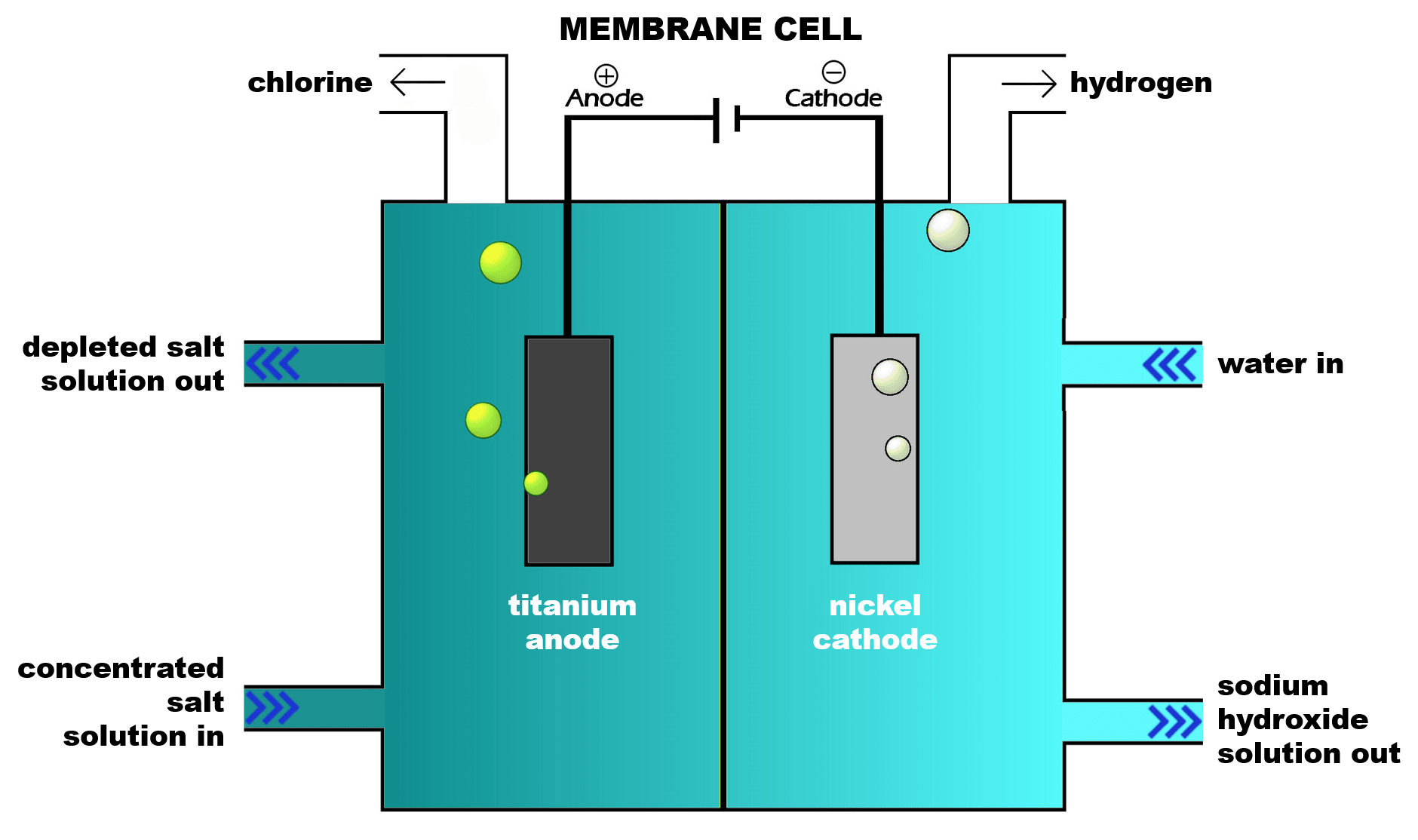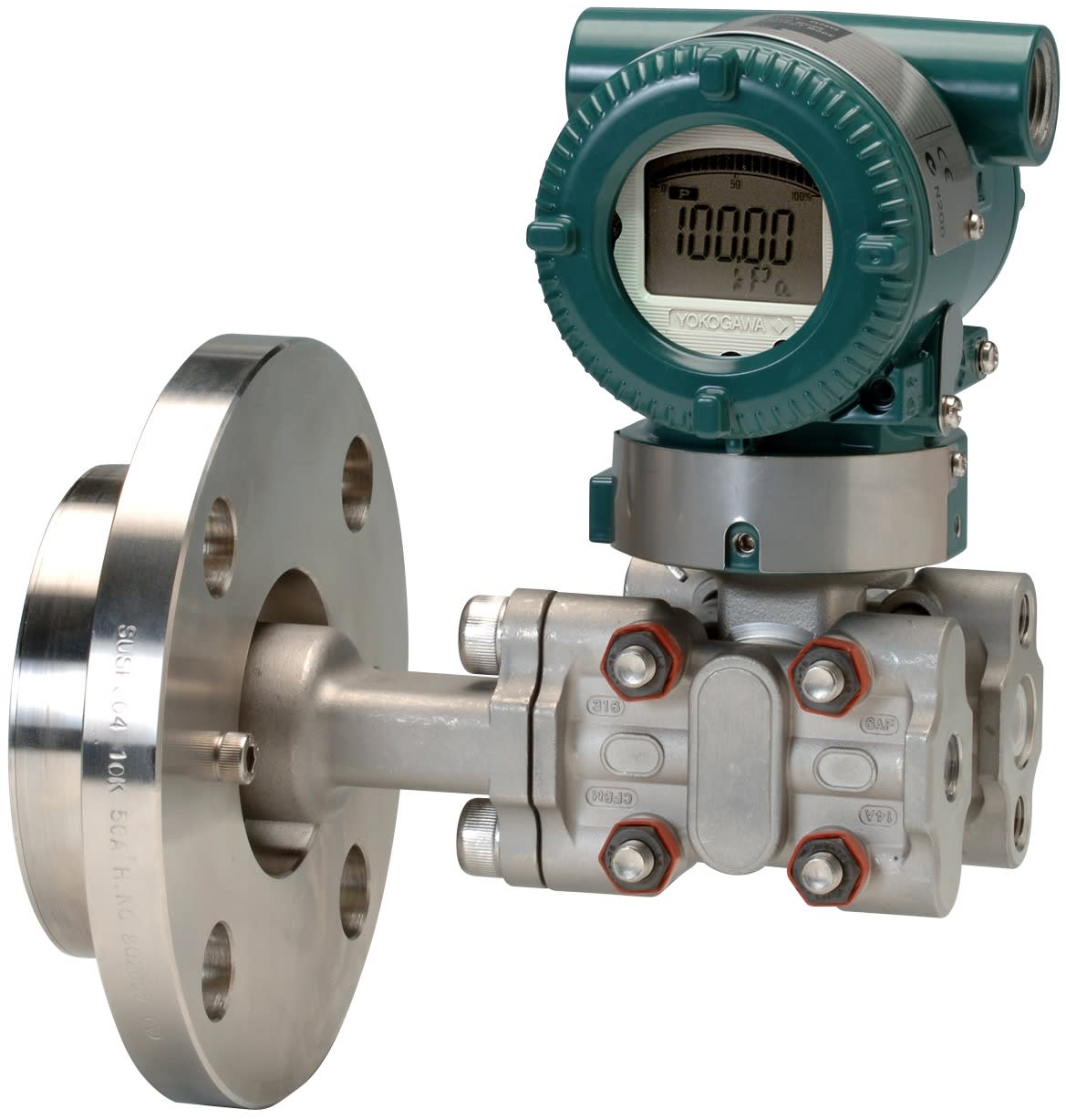Accurate, reliable, and stable flow performance extends cell membrane life with greater reliability which can save customers millions of dollars in membrane repair costs, reducing instrument maintenance costs and production downtime and production loss.
 Chlorine is used as an intermediate chemical in the production of products such as bleach, acids, and PVC. The chlorine manufacturing process includes an electrolysis tank with many cells (figure 1) into which water and ultrapure brine flow. Chlorine (Cl2), hydrogen (H2), sodium hydroxide (NaOH), and depleted brine flow out of the tank to the next phase of the process.
Chlorine is used as an intermediate chemical in the production of products such as bleach, acids, and PVC. The chlorine manufacturing process includes an electrolysis tank with many cells (figure 1) into which water and ultrapure brine flow. Chlorine (Cl2), hydrogen (H2), sodium hydroxide (NaOH), and depleted brine flow out of the tank to the next phase of the process.
Separating the electrolysis cell compartments is a delicate cation permeable membrane that is extremely costly to repair or replace. To protect that membrane, the flow rates into and out of the electrolysis cell must be balanced. Also, by accurately measuring pressure at the Cl2 and H2 headers, chlorine manufacturers can maintain a balance between the compartments and not only avoid damage to the membrane, but continue downstream operation and better assure product quality.
Challenges
To avoid tearing the membrane and potentially incurring millions of dollars in membrane repair and loss of production, accurate pressure measurements are critical. Measurements in this environment are difficult because the materials produced in the electrolysis cell can damage conventional pressure transmitters. Specifically, the corrosive Cl2 can damage the transmitter’s metal. Hydrogen molecules can also permeate and warp the sensor diaphragm, reducing the measurement accuracy and leading to instrument failure.
Zero drift is another factor that can reduce the accuracy of a pressure transmitter. The longer this is left uncorrected, the more potential that stress and tearing of the cell membrane can occur. The chlorine manufacturer must then balance the maintenance costs to frequently check and re-zero instruments against the longevity of the electrolysis cell.
Corrosion, permeation, or drift can cause a degradation of pressure measurement readings, which, in turn, can put the electrolysis cell out of balance and risk damage to the cell membranes. 
Solution
Yokogawa’s EJXC80A differential pressure (DPharp) transmitters provide accurate pressure measurement at both the Cl2 and H2 headers enabling users to attain and hold the right balance between the electrolyte solutions so the cell membrane is preserved and repair costs are avoided.
Recently, a chlorine manufacturer tested the EJXC80A transmitter side-by-side with a competitor’s transmitter. Over time, the user needed to adjust the zero on the competitor transmitter but not on the Yokogawa transmitter. The customer has since replaced the competitor transmitters with EJXC80A transmitters.
While the zero reading on conventional transmitters tends to drift and reduce the accuracy of pressure readings, the Yokogawa EJXC80A transmitters are environmentally compensated so they have less drift. The transmitter series provides unique, real-time dynamic temperature compensation that not only adjusts to variations in temperature but also to effects in static pressure change.
In addition, improved accuracy and reduced cell risk are achieved through the transmitter’s ‘chemical seal’ that prohibits corrosion and permeation. Neither Cl2 nor H2 can damage the transmitter because the diaphragm seal system (DSS) prevents process solutions from entering directly into the pressure-sensing assembly of the pressure transmitter.
Key Advantages
- Avoid costly repairs and extend the lifespans of cell membranes through accurate and reliable pressure measurement.
- Improve uptime by avoiding transmitter failure from corrosion or permeation thanks to the transmitter’s diaphragm seal system.
- Simultaneously reduce membrane risk and maintenance tasks because the transmitter is less prone to drift.
Industries
-
Chemical
Chemical plants rely on continuous and batch production processes, each posing different requirements for a control system. A continuous process calls for a robust and stable control system that will not fail and cause the shutdown of a production line, whereas the emphasis with a batch process is on having a control system that allows great flexibility in making adjustments to formulas, procedures, and the like. Both kinds of systems need to be managed in available quality history of product, and to be able to execute non-routine operations. With its extensive product portfolio, experienced systems engineers, and global sales and service network, Yokogawa has a solution for every plant process.
Related Products & Solutions
-
EJXC80A, EJAC80E (Differential Pressure Direct Mounted Seal)
Differential Pressure Direct Mounted Seal
-
Pressure Transmitters
Deliver high reliability across a range of process conditions.
Have Questions?
Contact a Yokogawa Expert to learn how we can help you solve your challenges.